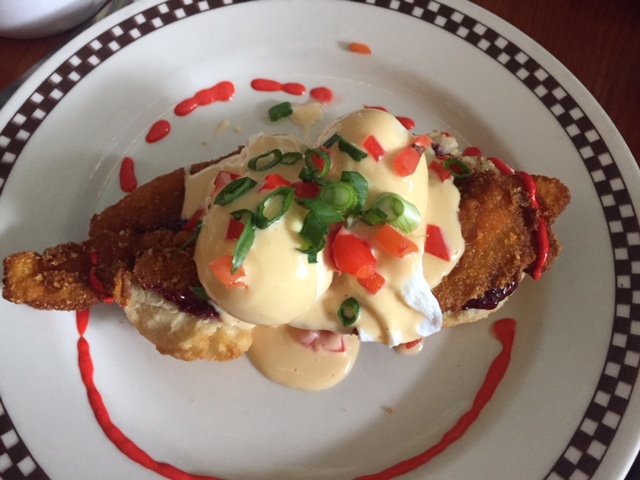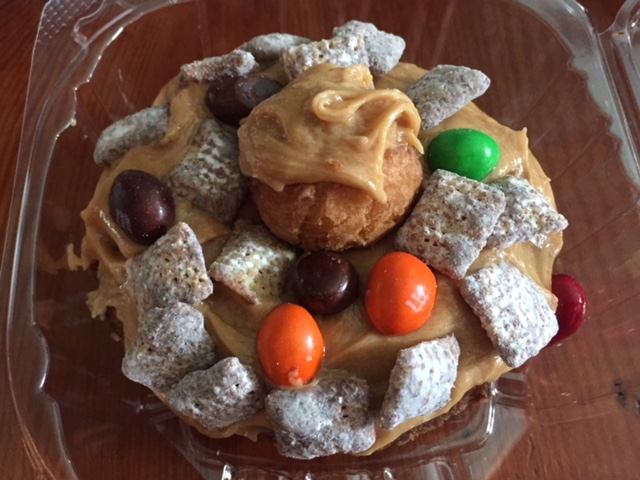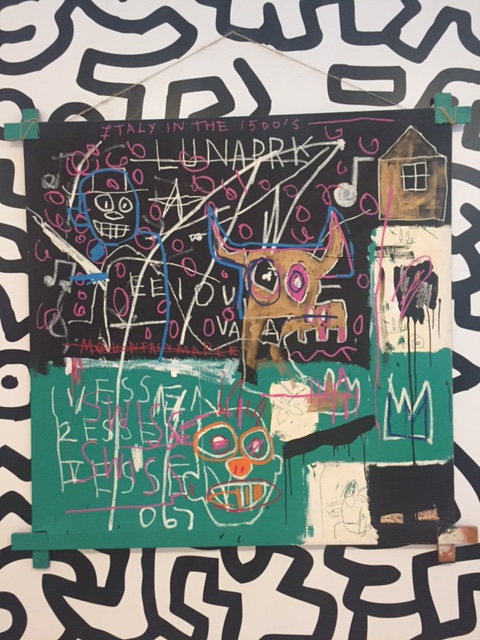For whatever reason, be it the end of the holiday season, the tiresome dreariness of the cold and snow, or the halfheartedly renewed attempts at hitting the gym, most people tend to hate the month of January. I’ve never been one of those people – I love something about the symbolic new beginning, and even though it’s hard to beat the “September-is-really-the-new-year” school-kid nostalgia out of my head, I appreciate the opportunity to have a fresh start, like a blanket of white snow covering last year’s lessons and mistakes.
For 2018, I have a list of long-term personal goals that I want to work towards. For starters, I met with my amazing financial advisor to create a feasible budget, improve spending habits, pay off student loans, and save for retirement. I already feel much more in control of my finances, which has freed up the mental space that my Type-A, over-analytical brain spent thinking about it.
While being financially healthy is a long term goal, I also set out with the intention of seeing through at least one attainable goal from start to finish early on in 2018. There’s no better way to begin a new year than by following through on something you want to accomplish, no matter how small – it only sets you up for achievement and success throughout the entire year! My goal that set the tone for 2018 was to complete another round of the Whole30.
For those of you who are unfamiliar with the Whole30 (or to briefly recap for those of you who read about my experience last year), it’s basically a 30 day reset in which you eliminate from your diet: sugar of any kind (artificial AND natural), alcohol, dairy, grains, legumes, soy, preservatives, and processed foods – basically anything that can cause an inflammatory response and gut imbalance. The idea is to fill your plate with meat and loads of fresh vegetables, accompanied by healthy fats and fruit. For me, I viewed it as a squeaky-clean paleo approach to getting back on track with proper eating habits after the holidays. I took my lessons learned from last year’s Whole30 and applied them to this year’s go around, with much more success. I found a coconut milk that didn’t make my skin break out, learned to moderate my amount of nuts/potatoes, actually read Dallas and Melissa Hartwig’s book It Starts with Food, and experimented with some new recipes – including slow cooker butter chicken, my FAVORITE paleo version of chicken tikka masala over cauliflower rice, paleo “corned beef hash,” and lemon chicken sheet pan bake with asparagus and cherry tomatoes (the last two I kind of made up while either too tired to cook something elaborate and/or lacking ingredients but OMG! they turned out SO good that I intentionally made them a couple of times over!). I loved the food that I ate while doing the program but man, is it a TON of work. Cooking every.single.meal out of my tiny, dishwasher-free apartment in Queens was a HUUUUGE time-suck. I didn’t have much of a social life in between bouts of grocery shopping and dish washing, plus I didn’t want to really eat out anyways, as most restaurant-quality food doesn’t meet Whole30 standards. In short, my life consisted of slaving over a hot stove/oven chopping chicken and vegetables with my boyfriend, cleaning up the unending dishes that resulted from said slaving away, deciding to buy paper plates to finish out the Whole30 (hey, it was either me or the environment), and flopping, exhausted, into bed with my dog to eat my apple with almond butter and stream TLC’s My 600 Pound Life (please tell me there are others out there that know/watch this show? This can’t just be my dirty secret…).
People keep asking me what the plan is for after the Whole30, and honestly, even though I’ve been done with the program for over a week, not much has changed. I love the food, feel great, and am mentally and physically at peace knowing that I am putting the best food that I can into my body. If you can believe it, I’ve even cut back on my coffee consumption (down to one to two cups a day, ideally before noon) and haven’t even felt the desire to add creamer and Splenda back in – STILL using coconut milk and cinnamon! That is HUGE for me. The biggest negative is the amount of time that it takes up – prepping lunch salads on Sundays, grocery shopping for the week on Saturday, and all the associated cooking/dishes. Now that the program is over, however, the “pressure” to always eat Whole30 compliant is removed – so if I’m ever too tired to cook, there’s always the option of not having to – or of making up something simple and not feeling like I need to make literally everything (read: ranch dressing, mayo, even ketchup, etc.) from scratch. But so far I am eating mostly Whole30, with a few “pit stops” to enjoy a Reese’s snowman that was in my Christmas stocking, some popcorn at the movies, – oh, and this:


These treats were savored on a special, somewhat sad, occasion: my favorite local diner in Queens, Queens Comfort, is closing down shop at their current location and moving to a bigger space. I couldn’t miss the opportunity to visit them one last time in their beloved, nostalgic locale on their second-to-last weekend brunch, now, could I?
Now that my time is a little more freed up after having completed the Whole30, what has Girl in Gotham City been up to (besides eating an anti-Whole30 meal)? Crossing stuff off her ever-growing NYC Bucket List, of course!
Last weekend’s outing was a visit to the Tenement Museum in the Lower East Side, new York City’s original landing dock for predominantly European immigrants in the late 19th century. During this time, Germans leaving behind a collapsing guild system and struggling economy, Russian Jews fleeing economic and political persecution, and the Irish escaping the potato famine all made their way over to this downtown Manhattan neighborhood. Located a mere jump away from Brooklyn via the Williamsburg and Manhattan Bridges spanning the East River, the influx of immigrants (and relative ease of immigration prior to Ellis Island, which wasn’t constructed until 1892) meant that space had to be economized.
Tenement, which was just another word for “apartment,” did not have the same negative connotation as it does today – in fact, the tenements were the city’s answer to New York’s first housing crisis. As might be guessed, the museum itself could be considered a vacuum-sealed time capsule of a 19th-century tenement building. Spanning a couple of buildings on Orchard Street, the museum’s 97 Orchard property was constructed in 1863 and housed 22 families over four floors. Yes, you read that right: 22 families, 4 floors. The building was constructed and improved upon up until 1935, when the owners were unable to keep up with expensive new safety regulations and allowed the building to be condemned – thereby effectively forcing all of the residential families out into the streets to find new accommodations. After that, the building was sealed up until 30 years ago in 1988, when Ruth J. Abram and Anita Jacobson founded the Tenement Museum and acquired the buildings, both now deemed national historic landmarks.
Walking into the building itself is worth the $25 admission fee alone – it is truly like stepping back in time. The original walls, ceilings – even the wall paper are still in tact. Decoration and museum signage is sparse – it doesn’t feel like a museum, it really does feel like an apartment complex. Or a movie set. This is why you are not allowed to enter the museum without a tour guide – everything is extremely fragile, and visitors are warned that they can’t take any photos (understandable, alas), touch or lean against the walls, or even bring gum or water inside.
I think the most striking moment for me was when I saw the men and women’s restrooms on the ground floor upon entering – I remember thinking it was strange that there was a public restroom inside the building, especially considering our tour guide made sure to tell us that there were no restrooms inside the museum. I absent-mindedly wondered if it was for museum staff. Later, I would come to find out that these bathrooms were part of indoor plumbing improvements installed on each floor in the early 1900s. Prior to that, 22 families had to share TWO outhouses – indoor plumbing was a luxury that the tenement houses could not afford. It’s hard enough sharing a bathroom with siblings and a roommate, let alone an entire, over-crowded apartment complex. After the indoor bathrooms were put in, a single family could be expected to share their floor’s bathrooms with 4-5 other families. City census records show that some families living in the Orchard Street tenement houses had as many as 12-15 family members. Each family’s unit was approximately the size of my studio apartment.
There are several tours from which to choose when you plan your visit to the Tenement Museum: Sweatshop Workers, Hard Times, Shop Life, and tours focusing on the experiences of specific nationalities: German, Irish, etc. All of them cover some of the same basic information, but each one focuses on specific aspects of the space and the different ways in which it was used. You can also take neighborhood walking tours, but it was too cold for one those – and they don’t enter into any of the actual buildings. I opted for the Sweatshop Workers tour, which focused on two families owning and operating clothing production businesses out of their homes. What was so striking about this particular tour for me was how it challenged the picture I had in my head of what a sweatshop was – it was much worse than I had imagined. Perhaps it’s simply ignorance on my part, but I always envisioned the workers in the ground floor of a shop owner’s apartment, working in tight quarters, but at least separated from family life. In actuality, shops were operated out of the owner’s own “living room” equivalent in their studio-apartment-sized unit. Anywhere from 3-4 people for smaller shops, and up to 12-14 in large shops, would be working out of one room in the apartment – the apartment where the shop owner, his wife, and their 4-5 kids also lived. And of course, these shops were all run before the unregulated work week, before indoor plumbing, gas, and heating, etc.
I don’t want to spoil the tour by giving too much away, but if you are a history buff/NYC local with a deep love of, fascination with, and appreciation for the city, I highly recommend a visit. You’ll come away with a greater knowledge of New York and, as many of us are descendants of these immigrant families, a deep appreciation for the hard work and sacrifices that went into creating the lives of relative luxury that we have today.
Hit up nearby Irving Farm Coffee Roasters for a cappuccino before taking an afternoon tour, then stroll over to Bowery to cap it off with a sunset visit to 50 Bowery Hotel’s rooftop bar The Crown for some fantastic views of midtown.

Have any of you ever been to the Tenement Museum? Did you have a similar eye-opening experience? Let me know in the comments!



